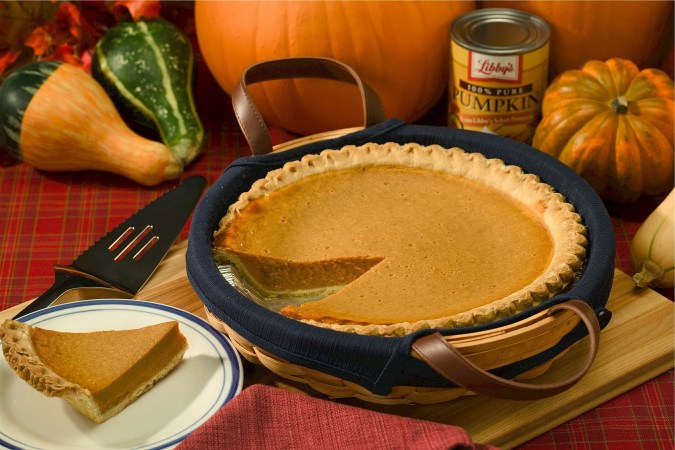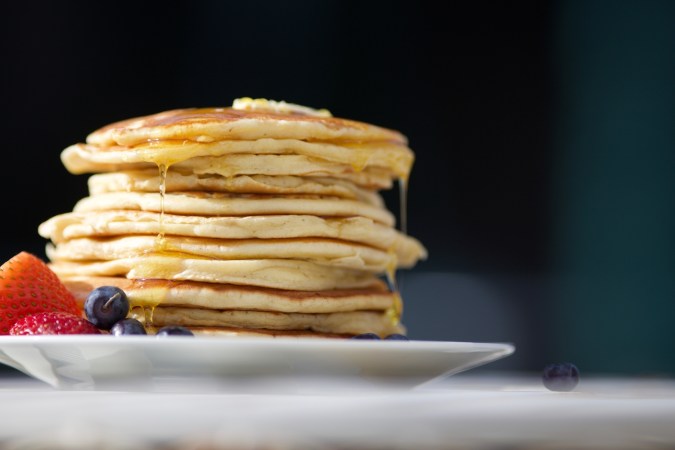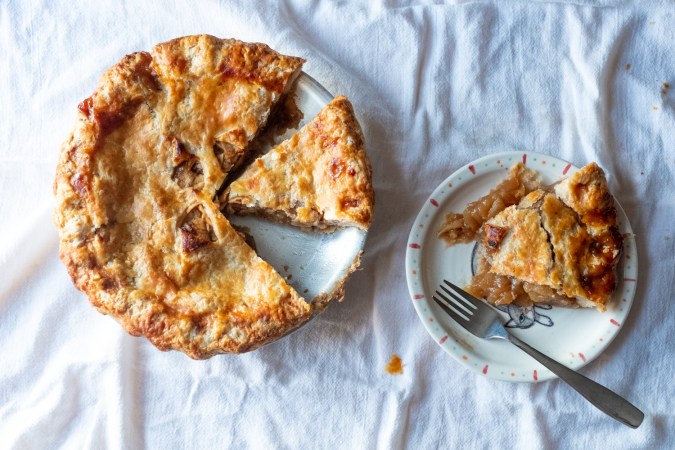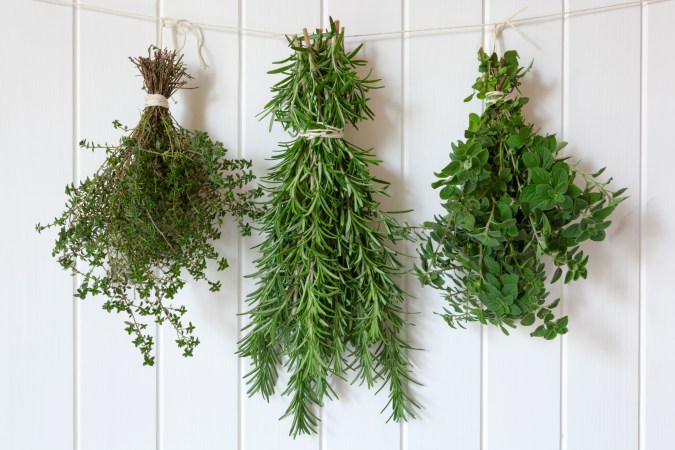

Baking is chemistry, which makes it tricky to swap ingredients on the fly. But if during the crush of the holidays you reach for the butter or an egg only to find, well, nothing, know that not all is lost—the solution may just be sitting in your pantry or fridge.
We ran some tests to find out if you can save your recipe or if you’re doomed to another trip to the grocery store.
Ingredients and their common substitutes
Some of the most basic building blocks of food have counterparts that do the job just as well.
Eggs
The proteins in egg yolks are strong emulsifiers, which means they’re good at keeping water and fat together. If a food needs structure or leavening, chances are you’ll find an egg in it.
But before you think about replacing eggs, you’ll need to figure out what’s its role in the recipe. Leavening can be fairly straightforward—just use another leavening agent, like a mix of vinegar and baking soda. But for structure, you’ll need something that serves as glue—that generally means pectin.
[Related: Unscrambling the health effects of eggs]
Pectin is a naturally occurring starch, but you can also find it as a powder or liquid at the grocery store. This compound absorbs water before other starches (like flour) can get to it and provides a gel-like texture. In fact, pectin is what makes homemade jams and jellies wiggly.
Yet as jam makers can tell you, proportions are crucial—you need to add enough pectin to absorb excess water, but not so much that it stiffens up your food to inedibility. Keep it to a ratio of one-to-one by weight. Good natural sources of pectin you may already have handy include applesauce and mashed bananas—the browner the better.
Butter
Butter is another way to provide lift. When you put dough in the oven, the fat in butter traps the water molecules. Before steam manages to escape, it creates delicious and airy chambers that stay in place as the dough settles into its final shape. This is why buttery goods, like croissants or other puff pastries, are generally light.
Fortunately, most vegetable oils offer the same effect when used in the proper ratio. The most popular one is coconut oil. Due to its level of saturated fat, this ingredient is solid at room temperature, which makes it easier to manage and weigh out.
As a rule of thumb use three-quarters of a unit of vegetable oil per every unit of butter. Any more than that, and the steam will struggle to escape, resulting in dense baked goods.
Milk
In the world of baking, milk provides proteins and sugars to improve texture, particularly in bread and enriched doughs. Any unflavored plant milk should work, but the higher the protein content, the better. Substitute them at a one-to-one ratio.
The experiment
To get a sense of how this would work practically, we used a relatively mistake-tolerant gingerbread muffin recipe from Southern Living. But we made one key change: we replaced the two tablespoons of water with the same amount of milk across all batches. This puts more protein into the mix, resulting in a tighter crumb and even more room for errors.
We chose replacements based on what’s easiest and most commonly available at home—mashed banana instead of eggs, soy milk for regular milk, and coconut oil for butter.
To know exactly what each replacement did to the final flavor, texture, and consistency of the recipe, we baked five sets of mini-muffins: three batches with one swapped-out ingredient, one fully vegan set, and a control batch with the original recipe. We cooked them all in the same oven, for the same amount of time, and at the same temperature.
The original recipe renders results reminiscent of quickbread—slightly less tender than your typical muffin, with a tighter crumb and crisper exterior. Flavorwise, the ginger, cinnamon, and other spices are present but not overpowering, with both the molasses and the brown sugar coming through for sweetness.
The results
The full-on swap

Probably most surprising is that while there’s a strong banana flavor in these totally vegan muffins, it’s hard to tell the difference between them and our control batch just by looking at them. They even had a similar texture, although the vegan muffins were slightly more tender. They rose the same, came out at the same consistency, and cooled at the same temperature. The only visual difference was the original recipe came out a little bit darker on the crust.
Banana instead of eggs

In terms of flavor, the mashed banana nearly overwhelmed the whole muffin. It’s not unpleasant, as flavors like cinnamon go well with the yellow fruit, but you might find yourself getting praise for your banana bread bites instead of your gingerbread muffins.
When it comes to texture, these were far moister than the control muffins. In fact, one of these came out so soft we weren’t sure it was fully cooked, but it was fine once it cooled down.
Coconut oil instead of butter

As the crater on the top can tell bakers out there, getting the right ratio of coconut oil on this batch turned out to be a lot trickier than we realized. Because we used volume, not weight—a rookie mistake—we walked straight into the ratio trap we wanted to avoid.
As a result, these were more of a spice brownie than muffins. They were dense, but not so much as to be unpleasant. The coconut oil didn’t leave behind any sort of taste we could detect, either, so if you keep a close eye on your ratios, you should be able to swap them out without anyone being the wiser.
Soy milk instead of milk

While the exterior had the dreaded divot, surprisingly enough, there was essentially no difference when it came to taste or texture. These muffins were slightly tougher than the other batches, but that wasn’t too noticeable. We used plain soy milk, so there wasn’t any impact on the flavor, but we wouldn’t recommend using flavored plant milks at higher ratios.
The lessons learned
Monitor water content
These muffins have a fairly tight crumb when made with the original recipe, so they won’t fall apart if a little extra water gets into the mix. This is because the recipe is heavy on sugar and cinnamon, which tend to absorb excess moisture and keep the ingredients in balance.
The fully vegan mix came out looking like pancake batter due to the moisture, but after baking, the muffins had the consistency they were supposed to have. Still, be careful with baked goods that require keeping things drier—not all recipes are so forgiving.
Watch out for strong flavors
Notice that we made banana bread instead of gingerbread muffins when we substituted the eggs. This can be an issue with any strong flavor—coconut milk and hemp milk are other notable offenders you should keep an eye out for. Always go for alternatives with a more subdued flavor that will not overpower the rest of the ingredients.
[Related: Four tips for bake-off worthy cakes]
Use weight, not volume, when measuring ingredients
We went back and did another batch of muffins using coconut oil by weight, and got better results. This time, we used a kitchen scale to weigh out the total butter in the recipe, broke out the calculator, and adjusted that to the correct ratio, which in this case, was three-quarters of a unit of oil per every unit of butter. The resulting texture was softer and quite similar to the control. So even if it adds one more step to the process, it’s especially important to do the math when you’re swapping ingredients.
Don’t trust your eyes
Always trust in the ratios of the recipe, not the consistency of the batter. Before they went into the oven, the vegan batch seemed too thin, the no-egg one seemed too chunky, and the no-butter one looked just right. Surprisingly, they all resulted in sturdy muffins after they cooked and cooled down. It’s one thing to eyeball a recipe that you know well, but especially when you’re flying by the seat of your pants, stick to the book.















